Make America Clean Again
Why not enforce state and/or local litter laws to clean up America and bring in some extra revenue too?
Some states are cleaner than others, with much less road trash and litter blowing all over the place. When driving through Florida and Arizona, I marveled at how clean it appears, but then again, I have seen mostly the tourist areas there. But both states look cleaner than my state of Delaware, even though Delaware passed a litter law in 1976 that allows a litterbug to be fined not less than $100.00 dollars, nor more than $500.00 for each offense. ($100 then = $568.66 today). For all that trash blowing about in Delaware, it could add up to extra revenue, if only Delaware enforced its litter law.
Are Florida and Arizona cleaner because their state litter laws are enforced? Or are those citizens more conscientious of practicing good hygiene and reducing litter?
Everybody has triggers that make them go a little nutso. For me, it’s seeing litter. It is so unnecessary. Leave no trace of oneself, please. Why do people litter? It makes no sense when it’s so easy to throw trash away in a trash bin. If there is no trash bin, then wait until you get to one. Duh.
But I was taught well by my parents who were born during the depression. My Dad, the ultimate conservationist, instilled my “trigger” when he “voluntold” me to help him “police” the yard as a child. For my efforts, my Dad placed a hologram pin on my shirt. Looking at it from one angle, it said, “Woodsy Owls says, Give a Hoot!” Looking at it from another angle, the pin said, “Woodsy Owl says…Don’t Pollute.” I loved that pin – it was so cool and the children at school thought so too.
I am fortunate to have had parents who wanted to practice good hygiene and educate their children not to litter, and I passed that important message to my two children as well. Since we lived in Wilmington, Delaware, where there is far more trash and litter than in the middle-class suburbs where I grew up, I added, “If you ever find yourself where there is a lot of trash/litter, get out as fast as you can, because if people don’t even care about cleaning up their own trash, they sure don’t care about you” during our one mile drive to school, passing by too many homes with litter spewed in their front yards.
I know that some Americans are not as fortunate to grow up with conscientious parents, and what a surprise for me when my son, at seven years old, chastised his best friend for littering at a park. His BFF quickly picked up his tossed-out bottle and carried it to the trash bin.
The anti-littering message was also repeated in my young ears by the “boob tube” as my Dad referred to it. The commercial showed a native American (aka Indian) who wanted to Keep America Beautiful, and then when he saw litter in the water or on the land, naturally, he shed tears of sadness. It made an impression on me, so these ideas to not litter were further reinforced for those of us who grew up in the 1970s. People Start Pollution, People Can Stop It. That seems simple enough.
According to the ANA Education Foundation:
On Earth Day, 1971, a PSA featuring Native American actor Chief Iron Eyes Cody and the tagline line, “People Start Pollution. People can stop it.” aired for the first time. Iron Eyes Cody became synonymous with environmental concern and achieved lasting fame as, “The Crying Indian.” The PSA won two Clio awards and the campaign was named one of the top 100 advertising campaigns of the 20th Century by Ad Age Magazine. In 1982, the Hollywood Chamber of Commerce honored Iron Eyes Cody, whose film repertoire included three Western films with President Ronald Reagan, with a star bearing his name on the Famous Walk of Fame on Hollywood Boulevard.
During the height of the campaign, Keep America Beautiful reported receiving more than 2,000 letters a month from people wanting to join their local team. By the end of the campaign, Keep America Beautiful local teams had helped to reduce litter by as much as 88% in 300 communities, 38 states, and several countries. The success of the Keep America Beautiful anti-litter campaign led to hundreds of other environmental messages through the years, from many different sources, including the Ad Council.
I don’t remember these ads playing when my children were growing up. Why is that?
NBC News reported on February 26, 2023:
Iron Eyes Cody, the ''Crying Indian'' whose tearful face in 1970s TV commercials became a well-recognized symbol of the anti-littering campaign, is pictured in this 1986 photo. [AP]
Since its debut in 1971, an anti-pollution ad showing a man in Native American attire shed a single tear at the sight of smokestacks and litter taking over a once unblemished landscape has become an indelible piece of TV pop culture.
It’s been referenced over the decades since on shows like “The Simpsons” and “South Park” and in internet memes. But now a Native American advocacy group that was given the rights to the long-parodied public service announcement is retiring it, saying it has always been inappropriate.
The so-called “Crying Indian” with his buckskins and long braids made the late actor Iron Eyes Cody a recognizable face in households nationwide. But to many Native Americans, the public service announcement has been a painful reminder of the enduring stereotypes they face.
The nonprofit that originally commissioned the advertisement, Keep America Beautiful, had long been considering how to retire the ad and announced last week that it’s doing so by transferring ownership of the rights to the National Congress of American Indians.
The nonprofit that originally commissioned the advertisement, Keep America Beautiful, had long been considering how to retire the ad and announced this week that it’s doing so by transferring ownership of the rights to the National Congress of American Indians.
“Keep America Beautiful wanted to be careful and deliberate about how we transitioned this iconic advertisement/public service announcement to appropriate owners,” Noah Ullman, a spokesperson for the nonprofit, said via e-mail. “We spoke to several Indigenous peoples’ organizations and were pleased to identify the National Congress of American Indians as a potential caretaker.”
NCAI plans to end the use of the ad and watch for any unauthorized use.
“NCAI is proud to assume the role of monitoring the use of this advertisement and ensure it is only used for historical context; this advertisement was inappropriate then and remains inappropriate today,” said NCAI Executive Director Larry Wright, Jr. “NCAI looks forward to putting this advertisement to bed for good.”
Today, much of Delaware’s roadsides look like a trash dump – and they banned plastic bags but, surprise, surprise, people still litter and it’s a horrible sight to see plastic trash bags draping the trees on a rural road when leaving the beach.
Last year, I watched my trash company pick up the trash and recyclables in an automated truck that leaves virtually no chance for any trash to escape while picking up everyone’s trash. But litter is everywhere – even at the beaches that gives Delaware much of its tourist revenue.
As the decades passed and America’s population and demographics grew, it seemed like nobody cared too much about littering. Anyone remember seeing pictures of Mt. Everest in the 1990s with all the garbage and spent oxygen tanks on the mountain? It was horrific to see.
One of my favorite authors, John Krakauer, wrote about the 1996 events that led to the Everest disaster and also described all the garbage he saw in Outside Magazine and in his books.
Krakauer's observations:
· Base Camp:
Krakauer notes that base camp, while a temporary settlement, is also a major dumping ground for discarded equipment, food containers, and other waste.
· Higher Camps:
He also describes the presence of litter, including empty oxygen tanks and other debris, at the higher camps, further up the mountain.
· Environmental Degradation:
Krakauer's writing highlights the environmental impact of the commercialization of Everest climbing, with the litter serving as a visible reminder of the human footprint on the mountain.
· Sherpas and Waste Management:
Krakauer also mentions that Sherpas, who are crucial to the logistics of Everest expeditions, often bear the brunt of waste management, including carrying out garbage and dealing with human waste.
Today, it is all too apparent that Gen Z did not receive the anti-littering message.
In May 2024, the NY Post reported:
Two young spring breakers surrendered to police Friday after a viral video showed them dumping trash cans full of garbage into the ocean while boating off the Florida coast last weekend.
A 16-year-old and 15-year-old boy were both hit with third-degree felony pollution for polluting the waters off Boca Raton, Fla. during a recent boat ride, the Florida Fish and Wildlife Conservation Commission announced.
“The two juveniles turned themselves in to authorities to face the consequences for violating the laws related to polluting the waters of the state of Florida,” the FWC said in a statement according to WPBF.
The sickening video, shared by YouTuber Wavy Boats, captured the moment a boat filled with several teens left the wild Boca Bash party scene and made the short trip out to sea for the quick trash dump.
Orange Crush, a spring break event in Tybee Island, Georgia, that used to be organized by students at nearby Savannah State University, brought “complete mayhem” to Tybee Island in 2023, according to Mayor Brian West, but he is optimistic for a better event this year.
Spring Break revelry seems to be an American tradition, but walking THROUGH the trash in the water? Now, I never joined friends who went to the Florida beaches on spring break in the 1980s because I couldn’t afford to take off work, let alone pay to go to Florida, so I don’t really know what it looked like, except for what I saw on MTV, but the beaches in CA and Florida looked clean then and I do not remember seeing trash on the beach – at least on the boob tube.
Are today’s college kids oblivious to seeing litter since they WALK right through it?They are walking over the trash!
The March 25, 2025 Daily Mail commented:
Some reports reveal that no, they did not get a long “fairly well” with fights breaking out, but one thing is for sure – they left A LOT of trash on the beaches.
So, we should be happy that there doesn’t appear to be too much trash in this 2023 picture from Ft. Lauderdale spring break?
Not so for Miami Beach after spring break.
Or Key West.
The trash looks disgusting, but what about its ecological effects on marine life?
Keep America Beautiful (KAB) remains active and has an active campaign against littering. Of course, they have their Diversity & Inclusion division, which always raises flags as to how much funding goes for this nonsense.
KAB asked, why do people litter? Here’s what KAB’s 2009 Littering Behavior in America research found:
· Personal choice. Individual behavior—or choosing to litter—means litter on the ground. Nearly one in five, or 17% of all disposals observed in public spaces were littering, while 83% disposed of litter properly. And 81% of littering was intentional, e.g., flicking, flinging, or dropping. On the other hand, individuals who hold the belief that littering is wrong, and consequently feel a personal obligation not to litter, are less likely to do so;
· Litter begets litter. Individuals are much more likely to litter into a littered environment. And once there, it attracts more litter. By contrast, a clean community discourages littering and improves overall community quality of life. Availability and proximity to trash and recycling receptacles also impact whether someone chooses to litter; and
· It’s ―not my responsibility. Some people feel no sense of ownership for parks, walkways, beaches, and other public spaces. They believe someone else will pick up after them; that it’s not their responsibility.
A 2021 report from Keep America Beautiful revealed:
Littering on the US roadways is down 54%? So, then why does it seem like there is more litter everywhere than ever before? I do not doubt that 3rd world migration contributes to this because looking at these beach pictures, one might think they are in a third world country and not in GA or FL.
On America’s 250 birthday, we also will have that Big and Beautiful DOGE report too.
KAB says they do not receive federal funding directly but do partner with federal and private agencies. That means, yes, they take federal funding.
Everyone picking up their own trash should not cost too much.
We need to do a better job ensuring that Americans want to KEEP America beautiful, so they don’t want to litter. For a generation that believes calling someone the wrong pronoun is offensive, how is littering not offensive to them, then?
At a minimum, if every state enforced their litter laws with a vengeance, not only might we have cleaner states, but we might also have a new generation that realizes that littering costs them a lot of money in fines and their money could be better spent on their overpriced coffee cups that need to end up in the trash bin!


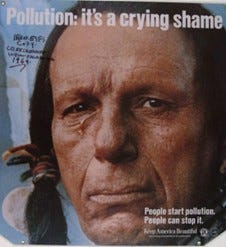


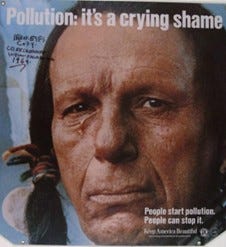



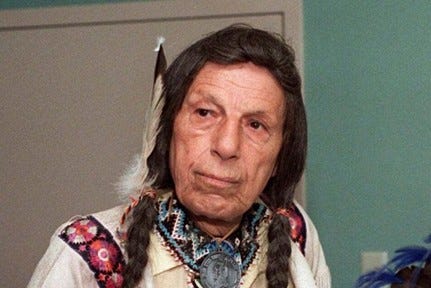
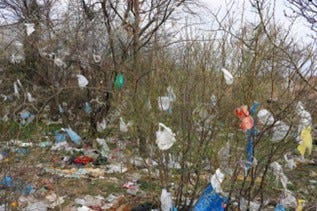




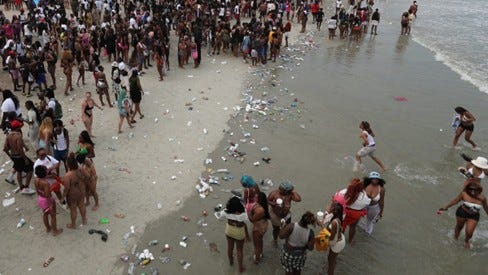


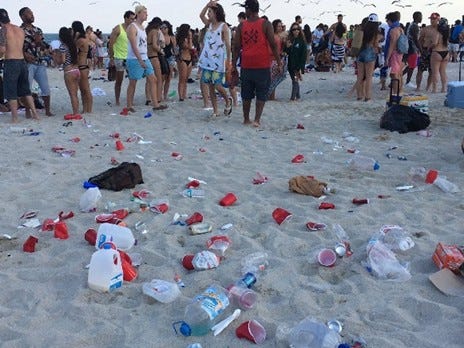
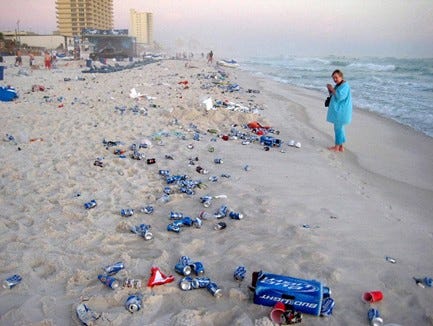
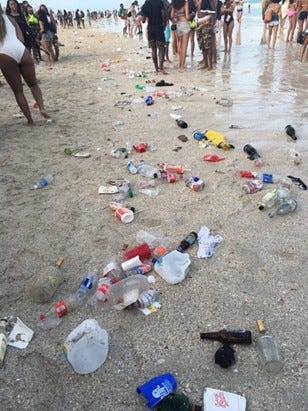
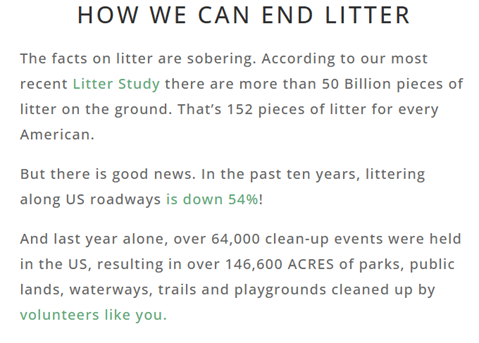
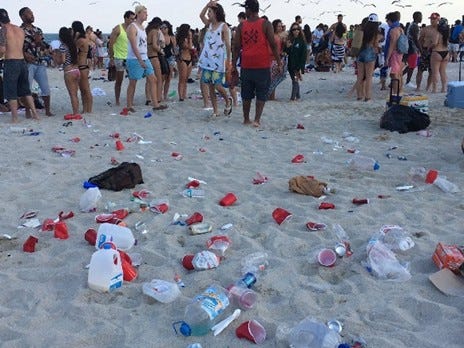


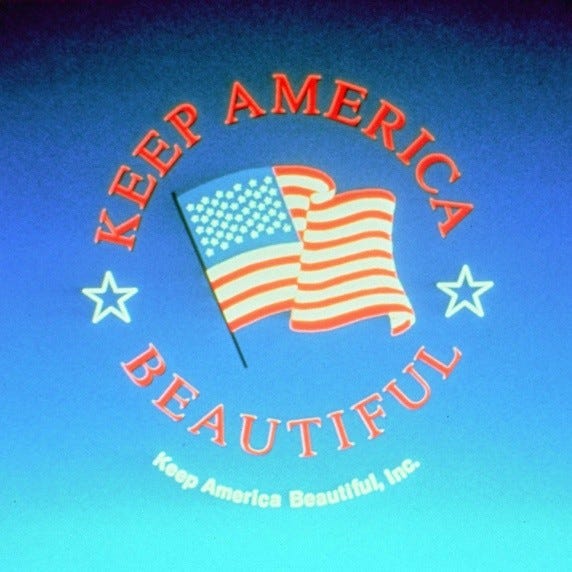
Governments "legally" dump megatons of trash in the ocean, then charge two kids with felonies for dumping a few bags. The kids need a "spanking," the government(s) should be ashamed.
EDIT: To be clear, I think giving those kids a mask, snorkel, and fins, and about 300 - 400 hours each of community service to pick up their trash would be sufficient. The governments that have dumped trash should clean theirs up too, but I expect that would require full scuba gear. 🤿🏊🚢
Love this idea. Striking how the green alarmists are dedicated to keeping America’s streets littered with garbage generated by the entitled and human waste emitted by the homeless. Just like their love of EV evaporated once Elon became a Trump supporter. They are hypocrites. Bring back the Indian shedding a tear for the despoiled environment.